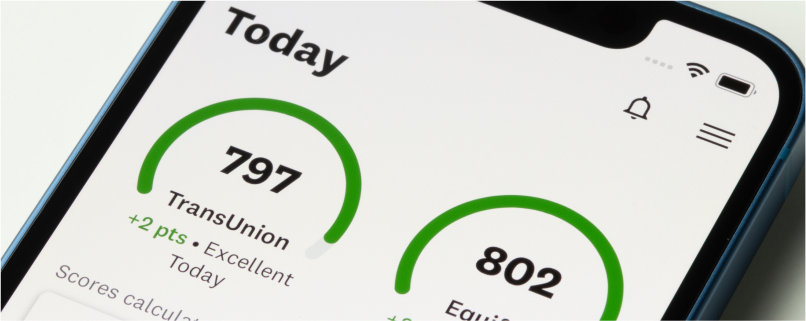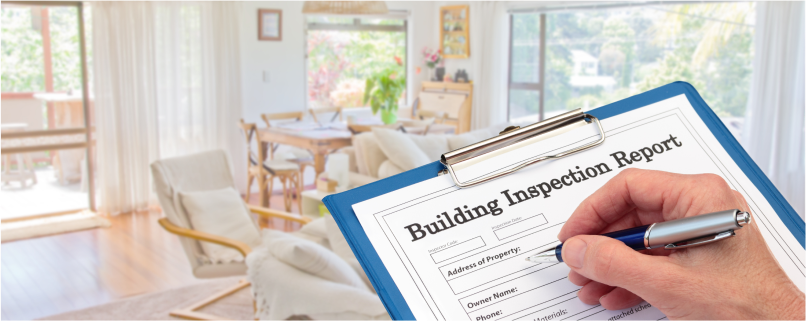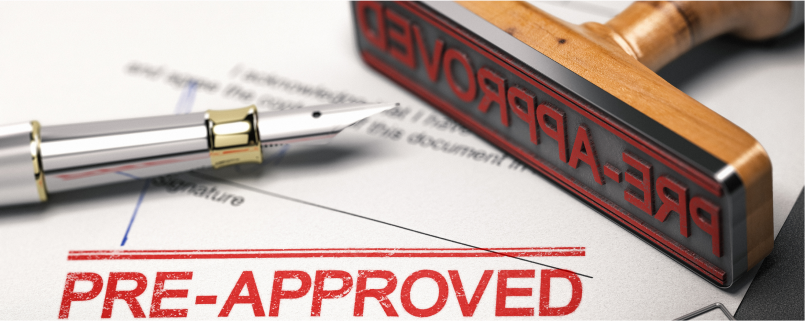Here are the top 10 steps to consider before purchasing a home.
Step 1: Know Your Credit Score

The home you can afford is greatly impacted by your interest rate, and your interest rate is directly related to your credit score. You should carefully analyze your personal credit report before allowing a lender to evaluate your credit
score.
What is a credit report? TransUnion, Equifax, and Experian are the three primary credit reporting companies from which a credit report draws its information. Your FICO score and Vantage score are both determined by this report. At least
once per year, all three reporting organizations offer complimentary reports. Prior to submitting an application for financing, you should dispute any inaccuracies you uncover in your report right once.
Your FICO score is used by lenders to assess your creditworthiness. This ranges from 350 to 850 according to Fair Isaac & Co.'s calculations.
A high credit score increases your chances of receiving a lower interest rate. A conventional loan will have a good interest rate if your credit score is 720 or more, but the lender's requirements will still vary.
Here are the aspects to consider that may have big impact on your credit score:
- Payment history
- Length of credit history
- Total debt
- Type of credit
- New credit
Step 2: Assess Your Financial Capacity

Your lender will inform you of the maximum amount you are eligible to borrow when you receive pre-approval. However, you can take a step forward by knowing your capacity without waiting for the pre-approval. Your annual income, monthly
debts, and anticipated down payment amount, among other factors, can all be taken into account by an online affordability calculator to assist you determine the appropriate price range.
Make a list of the features you want your property to have while staying inside your spending limit.
Your future home's size, location, and amenities will probably all depend on your pricing range. Consider the following instances of wish list items:
- Number of bathrooms and bedrooms
- Outdoor space
- Work commute
- Square footage
- Preferred location
- Layout, features and finishes
- Type of home
- School district
- Pet-friendliness

Always take into consideration your lifestyle. While having your dream home sounds nice, stretching your finances to their limit means you will have less money for things like vacations, gifts, and going out to eat. Always consider
other expenses and extra money each month for emergencies in addition to your mortgage payment.
Step 3: Look For a Real Estate Agent

Finding and purchasing a home is one of the biggest decisions you will ever make. Having an experienced guide to help you navigate through your search, negotiation and sale, can not only save you time and money, but also stress. The commission paid to the buyer's agent is typically covered by the seller, making utilizing an expert a no-brainer and an affordable choice for buyers.
- Offer price: Evaluates the value of a property and suggests a competitive opening bid.
Market insights: determines market trends, recent innovations, buyer demand, and movements in housing values.
- Local familiarity: Has knowledge of local neighborhoods and schools. Professional recommendations: Gives recommendations for a reliable lawyer, contractor, lender, or other vendor.
- Negotiating: Understands when to advocate for a reduced price and maximize your investment, while also handling the discounts needed for house repairs and unforeseen circumstances.
- Experience: Simplifies the process by resolving problems, monitoring paperwork, and remembering deadlines.
Step 4: Get Pre-Approved

Obtaining pre-approval from a lender will offer you a firm estimate of your house buying budget, unless you're making an all-cash purchase.
A lender will determine your debt-to-income ratio and evaluate your overall financial health by looking over the following documents in order to get you pre-approved:
- Assets such as retirement accounts and bank statements
- Debts such as credit cards, mortgages, student loans and even monthly expenses
- Income statements such as tax returns, rental income, W2s, and 1099s
- Alimony payments, child support payments, current rent, and any down payment gifts
- Records of foreclosures and bankruptcies
A pre-approval letter will be given to you after you have been pre-approved. It not only formally informs you of the maximum amount you may borrow, but it may also be useful when submitting an offer. A pre-approval letter demonstrates
to a seller that you are committed to buying their house. This is crucial in a competitive market where you are probably up against other offers.
Remember that you are not required to finance your loan through the same lender that provided your pre-approval. Before finally opening your mortgage, it is actually recommended to check interest rates and costs among quotes from various
lenders.
Remember that before closing, your debt-to-income proportion will be reevaluated. The overall loan amount you are eligible for throughout financing may be lowered if you take on more debt.
Step 5: Start With The House Hunting

Having a buyer's agent is the easiest way to begin your search. All you need to do is submit your “wishlist” and they will compile a list of homes that meet your requirements. Also to familiarize yourself with the area, search available
properties online. Find houses in the location you want, then refine by price and the features you require. Your buyer’s agent can also arrange showings and send you additional listings that are not yet available online.
Try to be adaptable. As you continue your search for a home, you'll probably need to change your criteria. Try different search criteria and see what your money could buy if you slightly modified your wish list.
What to watch out for during home tour
When you begin physically viewing homes, be sure to think about the property's "health" so you can anticipate any significant difficulties that may arise if you choose to submit an offer. The inspection will ultimately provide you with
a formal report on the caliber and condition of the house, but while you're visiting, look out for the following:
- Water pressure
- Traffic and neighbors noise
- Electrical issues
- Structural cracking and defects
- Exterior and roof quality
- Heat retention and functionality of windows and doors
Step 6: Submit An Offer

Your offer should be established on a comparative market analysis performed by your agent once you've discovered the ideal house. The CMA determines the market value of a home using comparable recent sales from the same neighborhood. Your
agent should assist you in determining a suitable offer price using the CMA as a starting point and in deciding whether to leave some room for bargaining depending on the situation of your local real estate market.
Here are some other factors to consider when making an offer in addition to the CMA:
- Closing date: The closing on a mortgage-financed house purchase usually takes place 30 to 45 days after the contract is signed. When submitting an offer, you can ask for a later closing date to accommodate your moving schedule,
but the seller might object.
- Disclosures: The term "disclosures" refers to issues with structures, unauthorized construction, natural disasters, and flood dangers. Make sure your agent asks for disclosure documentation because the majority of states demand
them from sellers.
- Earnest money: A sum of money you're willing to put down with your offer as proof that you're serious about purchasing the house is known as an earnest money deposit. When the deal is finalized, the earnest money is simply added
to your down payment. The deposit is forfeited if you decide not to complete the purchase.
- Contingencies: A contingency is a stipulation made between the seller and the buyer, or the lender and the buyer, describing events that must take place before the sale can proceed. There are some conditions that must be met,
such as the appraisal contingency that your lender will demand to make sure they aren't overpaying for your loan. It is entirely up to you whether or not to include a contingency for inspection.
It's crucial to remember that not all offers pan out. Even though it can be discouraging, try not to lose hope if your offer is not accepted for the first house you see.
Step 7: Schedule a Date for the Inspection

The best ways to be sure the house you're buying doesn't have any significant underlying flaws are to include an inspection contingency and finish a home inspection. The inspection is typically scheduled a week after the contract is signed.
You should go to the inspection because it will give you a better idea of how the house operates on the inside. Typically, your agent will also be present. You will have time to review the results with your agent and choose how you
want to communicate to the seller after receiving the official inspection report.
If significant, non-cosmetic problems are discovered, you can reopen the negotiation process and demand that the seller make the necessary repairs before closing or give you a credit so you can do the repairs yourself later.
Step 8: Establish your Financing

Even if pre-approved, a mortgage application needs to go through a few additional stages to become official. The "clear to close" signal, which signifies that the lender has accepted your purchase, should be given to you once everything
is finished.
Loan application
Some of the documentation you'll need for your application is already on file with the lender if you want to formally apply for your loan with them. You'll probably have to provide current financial statements. Being prompt in your responses
to inquiries is the most crucial thing you can do during this process. A different lender will inform you of the list of documents required to complete your application if you opt to proceed with them.
Appraisal
There isn't much you can do because the appraiser will be hired by your lender. To set up the appraisal, your real estate agent must coordinate with the seller's agent and the appraiser. You and your agent will receive duplicates of the
appraisal report after it has been completed so you may review the estimated fair market value and the comparable sales that were used in the computations.
If the appraisal's value agrees with your offer price, the transaction can proceed.
Better still if the appraised value is higher than your offer price! This implies that in addition to being free to close, you are also buying the
house below market value, granting you immediate equity.
If the appraisal comes in below expectations, your lender won't approve the full loan amount because, in their opinion, you overpaid for the property. If the appraised value is less than the offer price, you'll need to pay the difference
in cash or try to renegotiate the offer price with the seller. If you think the assessment was inaccurate, you might consider asking your lender for a new appraisal.
Step 9: Secure an Insurance Policy For Your Home

Before closing, you'll need to present proof of a homeowners insurance policy, so if you already own a house, ask your agent to assist you with opening a new policy. If you don't own a home, compare insurance options to find the one that
suits you the most. You might be able to arrange a policy that is paid for by your escrow account each month with the assistance of your lender.
Step 10: Close the Deal and Move In

The day or morning of the closing is a common time for buyers to conduct a last walkthrough to verify if the house is in the same condition as it was when you submitted your offer and to check whether the seller made the renovations they
had promised to.
Expect to sign documents at the title firm for at least a few hours on the closing day. Additionally, you should be prepared to provide money to meet your closing costs, which usually account for 3-5% of the sale price. You will get your
keys as soon as the signing is finished and the sale is recorded. The house is finally yours!
Now is the time to set up the utilities for the new house, including the electricity, cable, and internet. Verify the contract obligations with your real estate agent if you're purchasing a condo with a HOA that pays for some utility expenditures.













